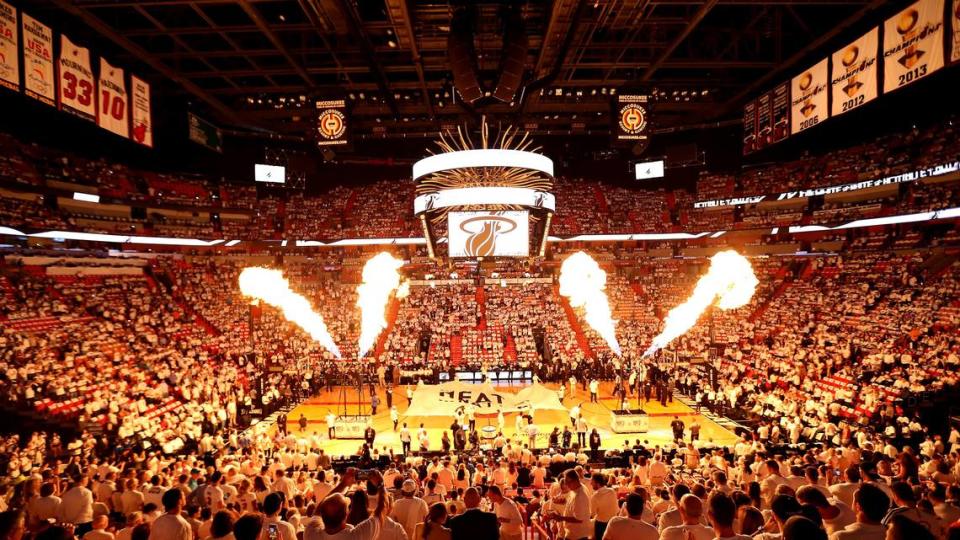Expansion of NBA rosters amid pandemic? What it would mean and where Heat’s roster stands
The Miami Heat knows what it’s like to play with the NBA minimum of eight available players. The Heat experienced that shorthanded scenario firsthand.
With nearly half of its roster unavailable because of the league’s COVID-19 health and safety protocols and a shoulder injury keeping center Meyers Leonard out, the Heat played the past two games — two road losses to the Philadelphia 76ers — with just eight available players. The shorthanded Heat hosts the Detroit Pistons on Saturday at 8 p.m. (Fox Sports Sun).
Help could be on the way for Heat vs. Pistons, but Butler, Bradley and Leonard remain out
But with COVID-19 issues forcing the NBA to postpone 12 games since Sunday because at least one of the teams did not have the league-required eight available players due to positive tests or contact tracing, ESPN reported the NBA is moving toward an expansion of regular-season rosters.
The NBA and National Basketball Players Association are in discussions to add a third two-way contract roster spot to expand rosters from 17 to 18 players.
Rather than being limited to spending up to 45 days with their NBA teams, two-way players are allowed to practice with their NBA teams all season and be active for up to 50 of their team’s 72 NBA games during this season amid the roster uncertainty stemming from the COVID-19 pandemic.
The Heat’s roster is currently at the regular-season limit of 15 players signed to standard contracts and two players signed to two-way contracts.
Miami’s two players on two-way deals are guard Gabe Vincent and wing Max Strus. Both were among the eight available for the Heat in its two games against the 76ers on Tuesday and Thursday.
Heat Check newsletter
Want to stay up-to-date on the Miami Heat? Get the latest news, game results, analysis and insider information in your inbox from Monday through Friday during the NBA season.
Vincent, 24, started both games and averaged 22.5 points while shooting 40.5 percent from the field and 34.8 percent on threes, two rebounds and 5.5 assists in 35.5 minutes. He had logged just seven total minutes of playing time in eight games this season prior to this two-game span.
Strus, 24, averaged 9.5 points on 46.7 percent shooting from the field and 4-of-12 shooting on threes, four rebounds and one assist in 25.8 minutes during this two-game stretch. He had played in just one of Miami’s first eight games.
“There’s no hesitation with either one of them,” Heat coach Erik Spoelstra said of Vincent and Strus. “They’re plug and play guys. And certainly if you have your normal complement of players and veteran guys, they easily can help you win. Both of them had some very good moments in these two games. They’ll study and they’ll continue to put in their grind. These guys are workers.”
Two-way deals are only for players with three years of service or less and do not count toward the salary cap or luxury tax.
The Heat remains about $8 million from the tax line of $132.627 million. That gives Miami some cushion for a potential trade if it wants to take in more salary than it sends out (within cap rules) at the March 25 trade deadline or before then.

 Yahoo Movies
Yahoo Movies 
